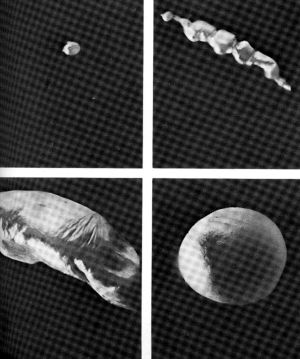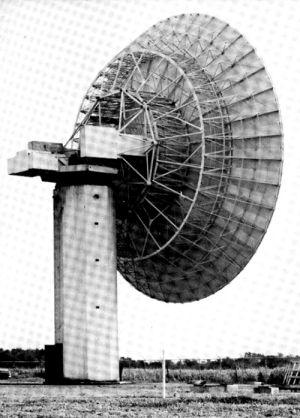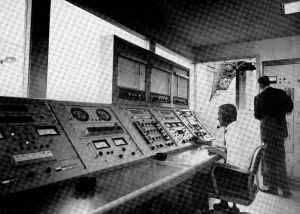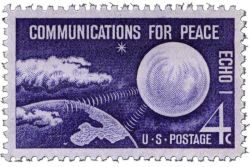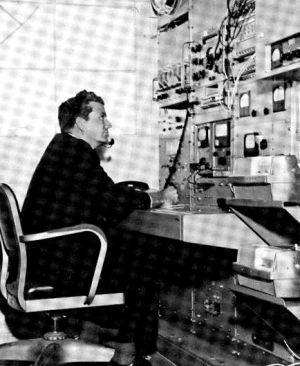 John Ford, head of Collins' advanced space systems department, conducts Echo II tests from the 28-foot-diameter antenna station. |
The Collins system is a transmitting-receiving-tracking facility employing two azimuth/elevation-mounted paraboloid antennas. The 28-foot antenna is equipped with a 10-kilowatt transmitter capable of operation at either 2380 mes or 2190 mes. The 60-foot antenna is equipped with a 10-kw transmitter. In normal operation, the 28-foot antenna illuminates the satellite with a radar signal at 2190 me while the 60-foot antenna serves as a monopulse tracking antenna and simultaneously illuminates the satellite at 2380 me. When visibility permits, an optical tracker on either antenna can be used to position either or both antennas for acquisition or can manually follow the path of the satellite. Normally, the system is capable of self-acquisition and self-tracking. As scientists discover more about the characteristics of Echo II, more sophisticated experiments are planned. The transmission of television is included in future experiments as more data is accumulated. The USSR, through its Academy of Sciences, has agreed with NASA to try to bounce radio signals off Echo II's reflective skin in the first joint experiment in communications via space between the two countries. The agreement calls for voice, facsimile pictures and code signals to be relayed by use of giant antennas at the Zemenky Observatory near Moscow and the Jodrell Bank Observatory in England. NASA received data from Soviet optical observations within a few hours after launch and noted that the information is of particular interest since it was obtained during the period shortly after the satellite was placed into orbit. Aside from knowledge gained during the early phases of the Echo II experiments, NASA expects to gather information which ultimately may lead to a world-wide passive satellite communication network. The agency has long been interested in controlled inflation systems for erecting large platforms in space without the tremendous weight drawbacks entailed by present mechanical systems. Inflatable devices could be used to deploy huge airborne antennas or Earth-orientation devices which use the Earth's gravity gradient, to name two possibilities. |
